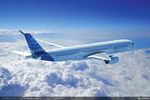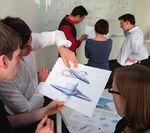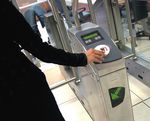ACARE - ADDRESSING NEW HORIZONS IN AVIATION
←
→
Page content transcription
If your browser does not render page correctly, please read the page content below
ACARE - ADDRESSING NEW HORIZONS IN AVIATION
Aviation is recognised as one of the top five advanced Chairman’s statement
technology sectors and makes a major contribution to
European competitiveness. It provides close to 9 million Aviation is experiencing several
skilled jobs, directly and indirectly, and contributes issues that can be resolved
600 billion Euros to Europe’s Gross Domestic Product. largely through technological
It is home to some 450 airlines and over 700 airports. improvements: Air traffic
European aviation plays a key role in global safety and congestion, insufficient capacity at
security, serving society’s needs for air transport. airports, growing data transfers between aircraft and the
ground and customer demands for optimized means of
communication.
If air traffic more than doubles by 2050, as experts
predict, the sector will find itself struggling to cope with
increasingly crowded skies and airports, challenging safety
levels and requirements for lower emissions and noise.
Horizon 2020 is the first step to address the ambition detailed
in Flightpath 2050. More than 300 companies as well as
research centers, universities, air navigation providers and
other stakeholders helped develop the Strategic Research
and Innovation Agenda, ACARE’s innovation roadmap that
will create economic value for aviation in Europe.
Delivering Society’s needs and
Fundamentally there are two aims of our work - to
securing global leadership maintain and expand industrial leadership and to meet the
ambitious goals on societal and market needs, protecting
European demand for air transport will continue to grow the environment and the energy supply, improving safety
over the coming decades. Sustainable mobility is central and security, and research and knowledge Infrastructure.
to satisfying this need and it is essential that travel is safe,
secure, fast, affordable and environmentally responsible. The sector is critically dependent on motivated engineers
and staff (including pilots) with excellent skills. In addition
Competition in this sector is fierce and increasing, not we need to develop our strategic research and test
only from established regions but also from new, strong, infrastructure to accelerate innovation for technology
challengers. and solutions that are novel, efficient and sustainable.
Maintaining global leadership for European Aviation and We believe that our strength of collaboration throughout
meeting the needs of citizens are the top level objectives the entire air transport supply chain will help us to achieve
that are addressed by ‘Flightpath 2050’. the very challenging goals that have been set. The launch
of the EU Horizon 2020 program and the aviation budget
allocated is welcomed. This initial phase will help us to kick
start the huge R&D investments needed to reach our goals.
The aviation community is committed to delivering a
globally competitive and innovative Europe. We call
on EU policy-makers to put in place the necessary
policy frameworks to make this happen.
Peter Hartman
Vice Chairman Air France KLM, ACARE ChairmanWhat does ACARE bring?
Flightpath 2050 provides the vision and ACARE provides
the roadmap for aviation research, development and 2. Competitiveness through innovation
innovation through a comprehensive strategic research
and innovation agenda (SRIA). The European industry is currently a world leader in
aviation and contributes very positively to European
ACARE brings together aviation stakeholders in one economic welfare. Decision makers, stakeholders and
consortium including industry, airlines, airports, Member society have recognized the strategic role of this industry
States, academia and research establishments etc. and the need to maintain and extend its leadership
through an appropriate and balanced regulatory
Encourages participation in research and innovation framework putting European companies on a level playing
throughout the supply chain. field with their competitors from all over the world.
2050 GOALS
2050 GOALS
n AFFORDABILITY
n CO-OPERATION
n LEADING EDGE TECHNOLOGY
n COMMON PURPOSE
n PUBLIC PRIVATE INVESTMENT
n BUILDING ON SUCCESS
n THE RIGHT POLICY AND REGULATION
1. Seamless mobility
Air Transport is at the core of the resilient, sustainable
and customer- centric intermodal transport system of
the future meeting European mobility goals. It continues
to support economic growth and employment and add
value at European, regional and local levels by providing
the connectivity required by all sectors including
business, tourism and leisure.
2050 GOALS
3. protecting the environment
n DOOR TO DOOR - 4HRS
Aviation has an important role to play in reducing envi-
n RELIABLE CONNECTIONS
ronmental emissions. Although aviation is responsible
n CONTINUOUS CONNECTIVITY for around 2% of human-induced carbon dioxide
n SINGLE TICKETS AND SINGLE CONTRACTS emissions globally it plays an important role in mitigating
FOR DOOR TO DOOR JOURNEYS greenhouse gas emissions, noise and local air quality
issues. Demand for air transport continues to increase,
n AUTOMATIC JOURNEY MANAGEMENT
meaning that air travel in the future will look very different
SYSTEMS than today to ensure that this growth is addressed in a
sustainable way.5. Excellent skills and worldclass infrastructure
2050 GOALS
Aviation is a high-technology sector which combines
n CHALLENGING TARGETS
extraordinary demands on research and innovation with
n IMPROVED OPERATIONS/ATM long lead times. Decisions in R&D may have consequences
n ALTERNATIVE ENERGY on the future of the aviation sector decades after they
n ATMOSPHERIC RESEARCH have been made.
By 2050 reduce CO2 by 75% per passenger kilometre,
reduce noise by 65% and reduce NOx by 90%, all relative
to the year 2000.
CO2 Noise NOx
75% 65% 90%
4. Safe and secure travel
Aviation of the future, as a diversified and integrated
transport system, will be interwoven with other transport To maintain its world-leading position and
modes. Resilience of the transportation system will competitiveness in a dynamic global market, Europe’s
improve through the early identification of emergent aviation sector must be underpinned by a highly skilled
hazards and their mitigation through improved design, workforce as well as world class capabilities and facilities
manufacturing and certification processes. in research, test and validation.
2050 GOALS
n EXCELLENT EDUCATION
n HIGHLY SKILLED WORKFORCE
n STRATEGIC RESEARCH FACILITIES
World Class Research and Key
Deliverables
To achieve the Flightpath 2050 goals for Aviation, Europe
must lead the development of an integrated resilient
air transport system that will meet the mobility needs
New technologies will increasingly change the dynamic of European citizens as well as the market needs.
of design, operation, management and regulation of
the air transport system. New standards and procedures The goals are very challenging but aviation has a track
will be required and a system-wide Safety and Security record in its achievements and success stories over
Management System will be implemented to operate the last 60 years since the first jet aircraft came into
throughout the whole chain of air transport activities. operation. Research and innovation will build on this
success over the coming decades to successfully deliver
these ambitious goals.
2050 GOALS
There will be significant programmes underway as part
n EMERGENT HAZARD MITIGATION of Horizon 2020 and Clean Sky and SESAR that will
n PASSENGER FRIENDLY SECURITY deliver much needed solutions that can be integrated
n MITIGATE CYBER AND OTHER RISKS into future aircraft and the broader Air Transport system.About ACARE
ACARE, the Advisory Council for Aviation Research and
Innovation in Europe, is a forum for Aviation stakeholders,
which since 2001, has set the research agenda for
delivering significant improvements in sustainable,
reliable, affordable and passenger-friendly aviation.
Significant progress since 2000 means new aircraft are
quieter and burn less fuel per passenger kilometre thus
with lower emissions.
ACARE has demonstrated the strength of working closely
together across the whole aviation community including
air transport, the manufacturing industry, research
establishments, universities, regulatory authorities,
Member States and the European Commission.
ACARE stakeholders are committed to continue playing
a pivotal role in providing the means for collaboration
and cooperation at a European and global level.
ACARE Members include:
ACARE plays a pivotal role in providing strategic advice
to policy makers which includes action in the following n 28 Member States
areas: n European Commission
n Manufacturing Industry
n Accelerating the Single European Sky (SES) n Airlines and Airports
n Strengthening the competitiveness of the European n Air Navigation
industry, by expanding the market to a Common n EASA and EUROCONTROL
Aviation Area with the neighbouring countries n Research Centres and Universities
n Determining and planning priorities for future air n Energy
transport policy initiatives n Regulators
n Monitoring progress and identifying gaps in research n Over 50 Members
areas and proposing steps to accommodate these in
future programmes Further information about ACARE can be found at:
www.acare4europe.org
Today Europe is a world leader in aviation: The SRIA
represents a vital contribution to maintaining and
expanding this excellence through Horizon 2020 that will
provide the initial pathway to research, development and
innovation and policies needed to deliver the Flightpath
2050 vision.
How to get involved
ACARE is open to all members that can support Flightpath
2050.
There are also many ways to get involved in the exciting
research opportunities in aviation through National and
European programmes. Whether you are in industry,
academia, research establishments or other groups you
can respond to calls for research proposals relevant to
your areas of expertise in programmes including Horizon
2020.You can also read



























































